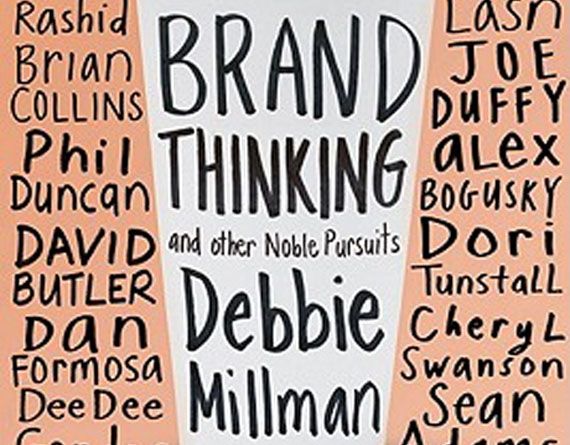
Photo Courtesy of Amazon.com
Is branding, as thoughtleader Wally Olins says, "a profound manifestation of the human condition?" Olins might be overstating the case a bit but he does hit on something fundamental when he says that branding is about belonging and the search for identity. We are what we buy? One only needs to look at a friend's Facebook page to see character defined in terms of favorite television shows, restaurants, sports teams and more. Branding is everywhere. In Brand Thinking And Other Noble Pursuits author and president of the design division at Sterling Brands, Debbie Millman gathers Olin’s and a host of other success stories from a wide variety of fields, roping in everyone from Malcolm Gladwell to Karim Rashid, to opine on what makes a successful brand and what branding means on a socio-cultural level. Consider for example the image of Santa Claus as a jolly, white-bearded man in a red and white suit. That image, marketing strategist Grant McCracken points out, comes to us courtesy of the Coca-Cola company. The early ads, featuring the company's version of Santa in a suit that just so happens to be in the colors of Coca-Cola cans and bottles, seeped into our culture and became part of a shared mythology.
 A brand is tied to emotion and it runs deeper than you might be aware of. As the interviews pile up in the book, it's clearer and clearer just how deeply branding impacts our lives. Branding goes far beyond window dressing, it can affect where we live, what we eat, who we vote for, where we go to school, the causes we give money to — nearly every aspect of our lives. One connection that is mentioned by multiple interviewees in the book is that religion is a brand and conversely, identifying with a brand is also a form of religion. There's a good reason that the term 'evangelist' has morphed from its religious origins to now denote someone who is passionately devoted to a brand or concept. We are not just consumers of particular brands, we are active promoters.
A brand is tied to emotion and it runs deeper than you might be aware of. As the interviews pile up in the book, it's clearer and clearer just how deeply branding impacts our lives. Branding goes far beyond window dressing, it can affect where we live, what we eat, who we vote for, where we go to school, the causes we give money to — nearly every aspect of our lives. One connection that is mentioned by multiple interviewees in the book is that religion is a brand and conversely, identifying with a brand is also a form of religion. There's a good reason that the term 'evangelist' has morphed from its religious origins to now denote someone who is passionately devoted to a brand or concept. We are not just consumers of particular brands, we are active promoters.
Branding is more than just advertising, it is one of the major engines powering society. Because this is a book of interviews, Millman doesn't really track the synergies and points of overlap and intersection but together they form a picture of a world full of many different opinions and cultures surprisingly knitted together through their choices of everyday objects from fast food to cars. The history of branding isn't all success stories either, there are branding failures as well such as New Coke or the revamped and then quickly retracted Gap logo. There are also brands that have had to face other challenges such as BP, which is currently hard-pressed to change public perception in the wake of a devastating oil spill.
The later interviews in the book touch on the issue of personal branding. Social media has created a construct in which we are creating online, our own brands. That brand is often defined by our support of other brands, the cars we drive, the gadgets we use, the clothes we wear, the vodka we drink, etc. Much of advertising has shifted toward getting people to adopt a brand as a personal identity; Microsoft's "I'm a PC" campaign is the most obvious recent example. This book may chill you at times to learn just how much of what you believe and consume is decided by people you've never met in a boardroom far way but it also makes the point that ultimately the success of brands still rests in the hands of individuals. The next generation with its increased access to information, is forming connections to brands in a new way. The future rests in their hands and we may see some very different branding strategies going forward.
Check out Amazon.com to buy the book.









